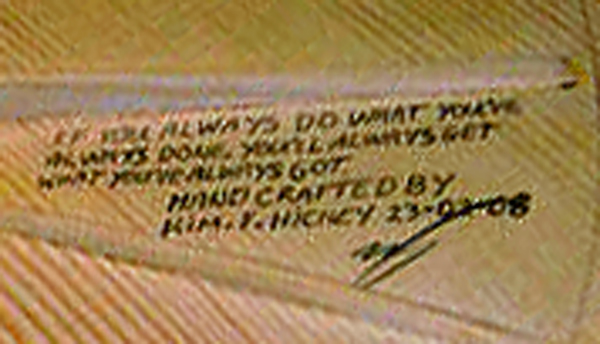Like the back, what I am seeking to achieve here has little to do with seeking out a particular tone. Rather, at this stage I am attempting, in my own way, to utilize as much area of the lower bout I can in order to amplify the strings energy as efficiently as possible, nothing new in that.
By doing away with the conventional angled tone bars, I seek to spread tension from the rotational force at the bridgeplate into the rear parabolic and fan braces.
It is my hope that this spreading of the tension will introduce the strings energy more evenly into the top and out across more of that area behind the bridge and the rear legs of the x brace. With what I hope to be a more balanced, less inhibited outlet for that energy, I theorize that it will be converted more efficiently to excite the diaphragm. We will see
Everything at the lower bout tapers to nothing. The finger braces which angle in toward the parabolic running behind the maple bridge plate are thinner and lower than those angling toward the front of the bridgeplate. I have lightened these particular braces in an attempt to make the top just a tad more flexible in the waist in the hope that it will keep the lower legs of the X a bit looser and encourage the pump.
The top is currently 2.8mm at the soundhole/bridge area and feathers to 2.5mm at the linings. The X is 7.5mm wide at the lap joint and app 15mm tall. However after the first 20mm of each leg from the centre, the height of the X brace sweeps to taper inline with the dimensions you may expect in a parabolic tapered brace 13mm high at it's centre. The width of the X brace legs also taper evenly from 7.5mm at the centre to finish around 5.5mm near the linings.
The bracing is Adi and the top is a nice 2A Adi that was given to me by Paul Burns (ex Steve Roberson Colonial Tonewoods) as a thanks for some toggle clamps I sent him a while back. (Thanks Paul, here's to you M8
In that vein you will notice that the soundhole support braces have also been omitted and replaced with a full cross grain patch as you would find on one of Lowden's or a Dave White's fine guitars. Generally, I have found that a guitar ruined by a rotated bridge will display a larger belly or dome than normal in the soundboard behind the bridge. Naturally enough for that area to lift or dome the area between the bridge and soundhole must collapse giving a kind of a wave effect to the top when looking from one side to the other. With traditional braces around the soundhole, it is MHO that this becomes the weakest point of a guitar top and invites bridge rotation. I consider that if you wish to get away with lighter bracing in the lower bout for the long term, you must address that weakness and I think that the full soundhole patch goes a long way toward this goal.
Anyhow, enough of my "out trumped conjecture" (Thanks Dennis
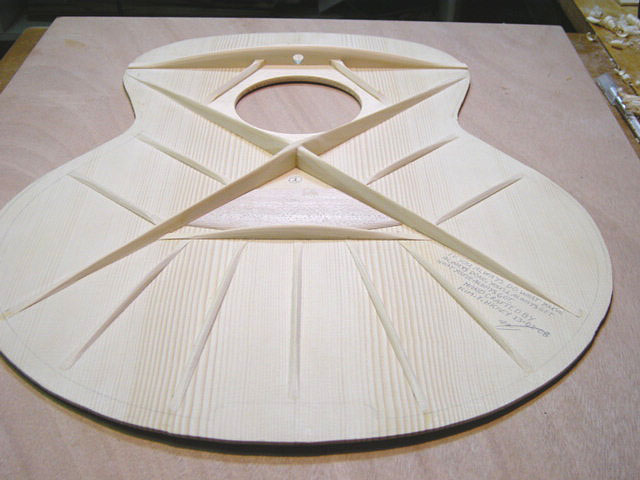
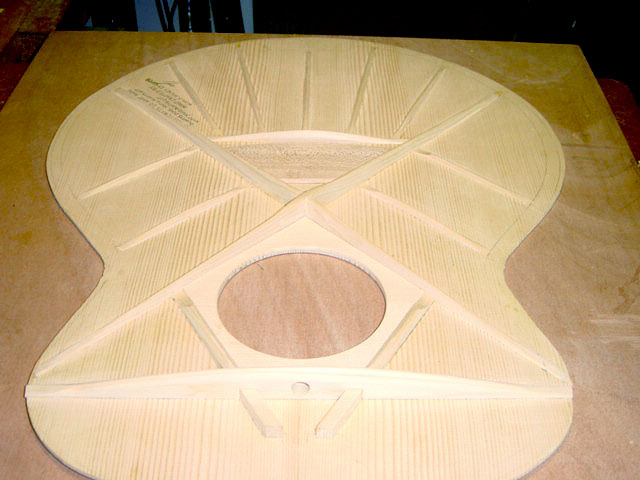

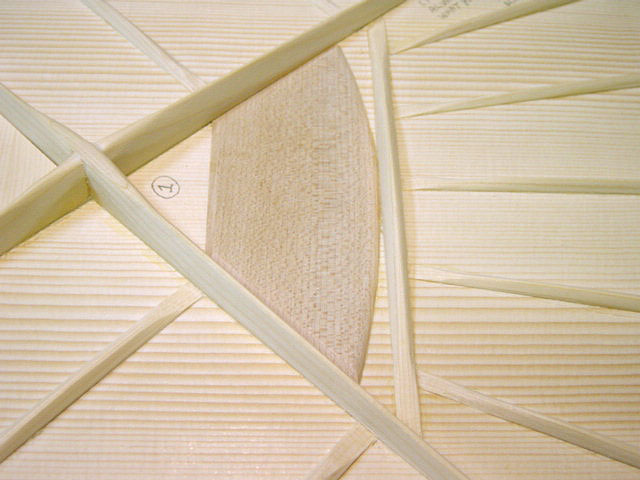
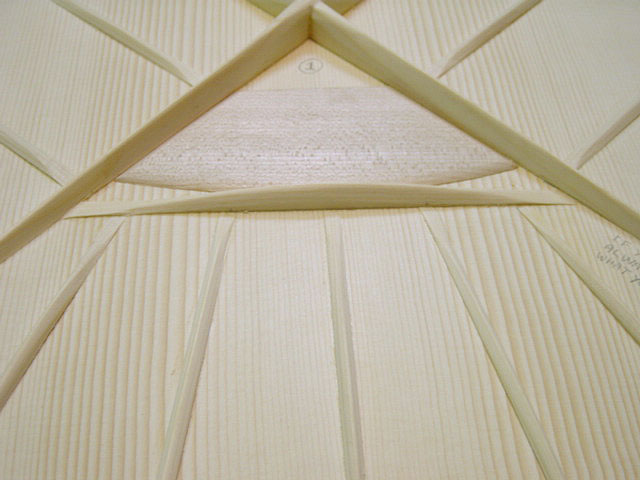
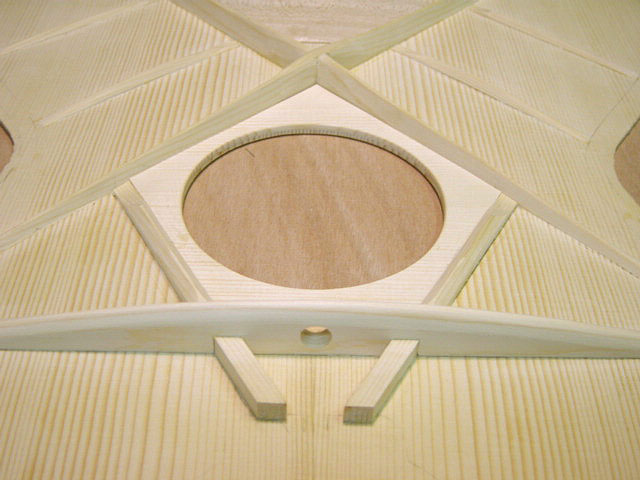
Cheers all.
Kim
